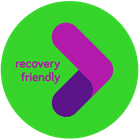Table of Contents
What are the statistics for teenage drug use?
Over the past few years, rates of teen substance use have shown a meaningful decline, a trend that has brought relief to families, educators, and public health officials. Amid growing concerns about adolescent mental health and well-being, this decline is a welcomed piece of good news. But what’s driving this trend, and how can we sustain it?
This positive trend is essential not only because it says something about the habits of our young people but also because it reflects the conversations, resources, and policies that are best supporting them.
A common question many parents, educators, and health professionals ask is: What are the statistics for teenage drug use? The short answer is encouraging: levels of adolescent substance use remain low, even below pre-pandemic levels. But behind that good news are nuances and important data worth understanding.
This blog by GateHouse Treatment examines the latest data on adolescent substance use, explores the factors behind its decline, and provides actionable strategies for parents, educators, and communities to keep this positive movement going. For those already facing substance use challenges, we’ll also highlight effective treatment options available at GateHouse Treatment in New Hampshire.
Encouraging Trends in Teen Substance Use
When we look at the latest data on adolescent substance use, one thing is clear: today’s teens are choosing healthier paths than previous generations. And they are doing so in record numbers.
According to recent data from the National Survey on Drug Use and Health (NSDUH) and Monitoring the Future (MTF) survey for 2024, rates of substance use among teens have hit some of the lowest levels in decades. For example:
- Marijuana use among teens was 18.4% in 2023, down slightly from 19.2% in 2022. Only 25.8% of 12th graders reported using marijuana in the past year, the lowest level in three decades.
- Alcohol use also decreased, with 14.6% of teens reporting use in the past month versus 15.6% in 2021.
- Annual alcohol consumption among 12th graders dropped to 41.7% in 2024 (down from 45.7% in 2023 and a remarkable 75% in 1997).
- Even cannabis vaping has stabilized, at 17.6% in 12th grade, with no significant increase in 2024.
- Cigarette use among 12- to 20-year-olds remained low, at 3.3%.
- While nicotine vaping is still of concern, it did not show significant increases: 11.7% in 2023, down slightly from 12.2% in 2022.
- Prescription narcotic abuse among seniors reached an all-time low: only 0.6% in 2024, compared to 9.5% in 2004.
These statistics represent real reductions in risky behaviors that can have long-term consequences on teens’ health and development.
Most notably, these data have remained low even after COVID-19 confinement, a phase that raised concerns about possible increases in substance use due to social isolation and emotional stress.
According to the National Institute on Drug Abuse (NIDA), “levels of reported use for most drugs among adolescents have remained low in 2023, holding below pre-pandemic levels”. This pattern was consistently observed in surveys administered to middle and high school students.

New Concerns: Emerging Products
Although the overall trends in teen substance use are positive, new forms of consumption are also emerging that deserve attention:
- Nicotine pouch use (nicotine pouches): increased to 3.4% in 10th grade and 5.9% in 12th grade.
- Delta-8 THC (a less regulated variant of cannabis) was used by 12.3% of 12th graders in the last year and, for the first time, was also measured in lower grades: 2.9% in 8th grade and 7.9% in 10th grade.
Why Teen Substance Use Is Declining
Several factors contribute to teen substance use decline. Here’s a closer look at some of the most impactful influences:
- Increased Awareness and Education: Prevention campaigns focusing on the risks of drug and alcohol use have been more targeted and science-driven in recent years. Initiatives like Monitoring the Future and school-based programs emphasize the impact of substances like fentanyl and the risks of addiction from an earlier age, making teens more informed about the consequences.
- Stricter Regulation and Accessibility: Better regulation of substances, including vaping products and alcohol, has helped reduce access for underage individuals. Additionally, social policies such as raising the legal drinking age and enforcing age restrictions at retail stores have played a significant role.
- The Role of Mental Health: Although levels of substance use have declined, mental health remains a significant concern. In 2023, 18.1% of adolescents reported experiencing a major depressive episode in the past year.
- Shifts in Social Norms: Cultural shifts have also influenced perceptions around substance use. Teens today are more likely to see drug use as a threatening or anti-social behavior, reflecting a broader change in societal attitudes toward drugs and alcohol.
- The Role of Technology and Social Media: Misuse of social media can affect mental health. However, it has also played a role in reducing substance use by providing alternative forms of entertainment and connection. Many teens now spend their free time online rather than engaging in activities that may expose them to drugs or alcohol.
- Earlier and More Effective Interventions: Access to mental health services, family therapy, and community programs has improved, making it possible to detect and address signs of risk early. Tools such as school data analysis, school counselor intervention, and working with families have proven to be effective.
- Pandemic-Driven Effects: While the COVID-19 pandemic disrupted teens’ lives in many ways, it also decreased their exposure to typical substance-use settings, such as large social gatherings or parties. Even as pandemic restrictions have lifted, substance use among teens has remained lower than levels seen in previous decades.
- Cultural Shifts: More and more adolescents value self-care, authenticity, and wellness as part of their identity. “Non-consumption” is beginning to be seen less as a moral imposition and more as an informed and empowering decision.
Mental Health and Substance Use Connections in Teens
While the decline in substance use is positive, it’s essential also to consider the mental health context. Anxiety and depression can co-occur with substance use issues. The Kaiser Family Foundation (KFF, 2024) reported that:
- A significant percentage of adolescents experiencing depression are more likely to engage in substance use, such as drinking or illicit drug use.
- Adverse childhood experiences, including bullying or emotional abuse, increase the risk for both mental health issues and substance use.
Providing integrated treatment and addressing mental health alongside substance use is crucial. When teens receive support for mental health challenges, it not only improves their emotional well-being but also reduces their likelihood of seeking coping through substance use.
Treatment Tailored to Teens GateHouse Treatment in New Hampshire
For families navigating teenage substance use issues, early intervention and the proper treatment approach make a profound difference.
GateHouse Treatment in New Hampshire offers tailored programs designed to address adolescent substance use alongside mental health challenges. Services include:
- Alcohol Detox to manage withdrawal safely and effectively.
- Partial Hospitalization Program (PHP) for intensive care while still allowing teens to remain connected to the outside world.
- Intensive Outpatient Program (IOP) and Outpatient Programs (OP) for flexible, ongoing support tailored to the needs of each teen.
- Professional clinicians oversee medication-assisted treatment (MAT) for teens struggling with substance use disorders.
- Family Programs to engage parents and caregivers in the healing process, strengthening support networks.

GateHouse Treatment takes a holistic approach, addressing symptoms, root causes, and co-occurring mental health issues. Whether your teen is struggling with alcohol, cannabis, or other substances, personalized paths to recovery can create lasting change.
If your family needs help, you’re not alone. Contact GateHouse Treatment for immediate support and guidance by calling (855) 448-3588 or contacting us online.
- Virtual Addiction Treatment: A New Era of Accessible Recovery at GateHouse Treatment - July 4, 2025
- Teen Substance Use Decline in 2025 - May 27, 2025
- Alcohol and Brain Damage: What Happens When You Drink Too Much? - May 14, 2025





